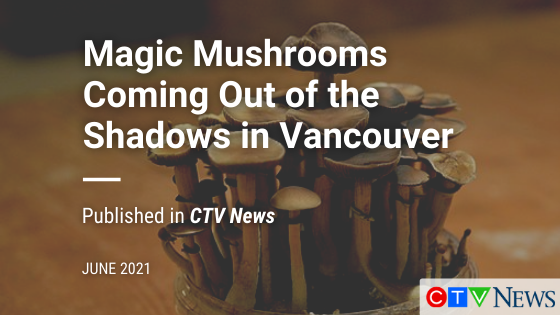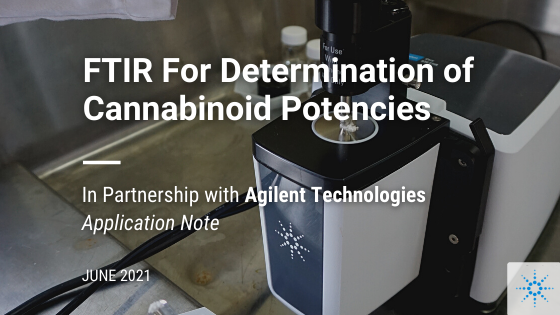Sell Cannabis Consumers Convenience, Not Math Problems

Why current THC labeling is confusing and holding the cannabis industry back.
Mary Jane bought an eighth of Blue Dream. This cultivar has 23% total THC. She then rolls one half-gram preroll. If she takes three puffs, how much THC, in milligrams, has she consumed?
Many of us failed those math problems in middle school. So why do we sell cannabis this way?
According to academic research and articles published by Cannabis Business Times, consumers are looking for high THC values in cannabis products. Those high numbers serve as a proxy for quality, and the industry is delivering. Complicating matters is THC potency inflation, which many say is prevalent in the industry. (Editor’s Note: Read CBT’s November cover story, “Inflated,” for more on this topic.) Therefore, even more important to consumers is the next question.
The 19% THC flower costs $5.97 per gram. The 25% THC flower costs $10.99. Which one gives me the most bang for my buck?
The current labeling of cannabis products is complicated, meaningless, and gives customers the wrong purchasing signals. The market is tilted toward buying the highest total THC percentage because it is a number that everyone believes they understand. There is a lot wrong with this. First, research in the cannabis R&D laboratory at Delic Labs shows that the way total THC is calculated now* only accounts for the weight loss of the THCA molecules, but not for the mass loss of the whole product during decarboxylation, and therefore underreports the percent THC.i (See formula below).
*For example, total THC in a pure THCA crystal after decarboxylation is calculated this way: 100%THCA*0.877+0%THC=87.7%. This only considers the weight loss of the THCA molecules, but does not accommodate for the weight loss of the entire product. A more accurate formula would increase THC percentage: (0.877*THCA + THC)/ (Product – 0.123*THCA). Editor’s note: See more references and further reading at the end of this article.
Second, according to research published in 2020 in JAMA Psychiatry, THC weight and intoxication were not found to be directly linked,ii despite what the term “THC potency” might lead consumers to believe. And finally, a weight percentage of a product does not give much information about how much of this active ingredient is actually consumed. At Delic Labs, we studied cannabis preroll inhalation and found that about 1 mg of THC is inhaled per puff, although the specific numbers vary widely by cultivar and joint architecture.iii
There is a great need to find an intuitive way to present THC levels. Studies and consumer data show that cannabis consumers are diverse in age, socioeconomic background, and cannabis-specific knowledge.iv There are even more people still at the sideline who know little to nothing about cannabis but could be potential customers in the future.
But today, a customer needs an advanced degree in mathematics to shop cannabis products. Flower is sold as weight percentage (%wt) THC. Vape cartridges are labeled as mg/g (THC/total weight of oil). But edibles report their THC in milligrams per unit. Tinctures show mg/mL (THC/total volume of oil). Who can keep up with all this?
Although historically the focus has been on THC levels, there are efforts to show that there is more to the cannabis experience. For example, a cannabis growing competition known as The Emerald Cup partnered with cannabis testing company SC Labs to categorize entries by their terpene profiles. In a 2021 press release about the new approach to the competition’s rankings, SC Labs co-founder Alec Dixon explained that “Historic Emerald Cup data has shown year after year that the judges’ picks and winners have never had anything to do with THC content when compared to the averages, but winners consistently test much higher in terpene content than the rest of the field. The real quantitative quality marker in cannabis is terpene concentration.”v
Yes, THC levels can be part of the purchase decision, but they cannot be the sole factor, if the cannabis industry wants to rival the alcohol or any other established multibillion dollar industry. No one shops intending to pick a good wine but then opts for vodka because it has more alcohol content.
We need to be selling convenience and clarity, not math problems.
New Approaches to Sell Cannabis
I have two proposals of how to communicate THC levels to consumers in ways that they would better understand and could help craft the right sales message. Both are inspired by how products are presented in the alcohol and nutraceutical industries.
1. Standard Unit: Present a number reflecting the weight of active substance in a cannabis product. When drinking alcohol, we inherently know that we can drink more ounces of beer than vodka before we are drunk. Countries help consumers with guidance about the risks of alcohol consumption with the Standard Drink.vi
A Standard Drink is a guideline for alcohol consumption. It represents a drink of a fixed amount of pure alcohol. Depending on the real-life drink in question, the standard drink for this beverage will change in volume, as the alcohol concentration of that drink changes. In the U.S., for example, a standard drink is 14 grams, or just over a half ounce of pure alcohol, which is usually described as 12 ounces of beer, 5 ounces of wine and 1.5 ounces of a distilled spirit or liquor. Each drink contains the same amount of alcohol and therefore should produce the same inebriating effect.
We could apply this same idea to cannabis products. It could be named Standard Unit. For example, the “Standard Unit” for most edibles is typically 5 mg of THC. For prerolls and any other products, a Standard Unit is also 5 mg of THC. We could use the same cannabinoid mass across all product categories.
In this logic, package sizing would not be about weight anymore. Currently flower is being sold in eighth ounce or 1 gram sizes. In this model, cannabis would be packaged in serving sizes of one, five or 10 Standard Units.
I postulate that Standard Unit packaging will shift the focus away from THC to other qualities of the cannabis product. As all flower packages contain the same amount of THC, a customer does not worry about the percent THC anymore and can decide if a myrcene or limonene dominant cultivar is more interesting.
2. International Unit: Present a number based on the effect, not the weight or concentration, of a cannabis product. Nutraceuticals and dietary supplements, like Vitamin C and ginger, are sold with International Units (IU) on the label. Consumers are told, for example, to take 1000 IU of Vitamin D per day. While we don’t know how much that is, it is a standard to help understand the potency or biological effect of a product. Plus, it’s a round number that is easy to remember.
Pharmacology defines IU as a unit measure of the effect, not mass or moles. As it is based on biological activity, this makes it easy to compare different forms of the same substance, let’s say tablet or tincture. And as the numbers are arbitrary, the cannabis industry could set the numbers for THC, CBD and other cannabinoids at a normalized number of 100 for a single dose.
New standards for THC products could look like this:
- Edible: A single serving has 5 mg of THC; set this as 100 IU. A package of THC-infused chocolate with 10 servings could have 1000 IUs. Do the same for drinks.
- Prerolls: Based on research from Delic Labs, we know that about 1 mg of THC is inhaled per puff. Set that as 100 IU. Now a single preroll can have 1000 to 3000 IU, based on number of puffs it takes to smoke each. This would need to be tested to determine the number of puffs and the specific amount of THC inhaled per puff.
- Flower could be packaged as 1 gram equals 2000 IU, and an eighth ounce would be 7080 IUs.
These examples assume that a single edible of 5 mg has the same intoxicating effect as a single puff from a preroll. This would need to be studied by pharmacologists.
For other cannabinoids, the milligram to IU relation would likely shift, as the pharmacology is different.
For example, Dr. Linda Klumpers, a cannabinoid researcher with the University of Vermont, wrote a compelling review of how available research shows that CBD requires higher doses for an acute effect in anxiety.vii Clinical studies have used at least 300mg. This could be set as 100 IU.
- Now a tincture bottle can have 1000 IU (3000 mg CBD in 30 mL MCT) with a 33 IU serving size (1 mL).
- Customers will find it easier to shop for THC and CBD because the IUs are the same. No mental math will be needed to understand the difference between a THC and CBD tincture with 5mg/mL or 100mg/mL respectively.
Other Cannabinoids:
- For CBN and THCV, the same would apply; bump up the mg to IU ratio, based on pharmacological studies of intoxicating effects.
The most important difference between the two proposals, Standard Unit and International Unit, is that the former considers the mass of cannabinoids in the product before consumption. The latter measures the mass of cannabinoids taken up by the body and resulting effects.
Percent THC labeling is the largest obstacle to educating customers about flavor and effect, not just THC, and very few outside of the cannabis industry understand it. It might put off new customers. For all those reasons, we must develop a new labeling system.
REFERENCES AND FURTHER READING
i “Totally miscalculated: The Total THC Problem,” The Cannabis Scientist, Jan. 11, 2022
ii A) “Association of Naturalistic Administration of Cannabis Flower and Concentrates With Intoxication and Impairment,” JAMA Psychiatry, June 10, 2020 B) “Oral Administration of Cannabis and ?-9-tetrahydrocannabinol (THC) Preparations: A Systematic Review,” Medicina, June 23, 2020 C) “Manipulating brain connectivity with d?-tetrahydrocannabinol: a pharmacological resting state FMRI study,” NeuroImage, Nov. 15, 2012 D) “Pharmacokinetic and pharmacodynamic profile of supratherapeutic oral doses of ?(9) -THC in cannabis users,” The Journal of Clinical Pharmacology, June 10, 2013
iii Technical program of ACS Fall 2021, August 22 – 26, 2021. PAPER ID: 3596775; PAPER TITLE: Don’t hold your breath: Smoke and vaping studies on cannabis products to quantify “quality”; DIVISION: Division of Chemical Health and Safety; SESSION: Cannabis Aerosols: Safety & Analytics; DAY & TIME OF PRESENTATION: Sunday, August 22, 2021 from 4:35 PM – 5:00 PM
iv “Medical Cannabis Use among Adults in the Southeastern United States,” Cannabis, Feb. 9, 2019
v A) “Testing Cannabis Competitively: A Conversation with the Emerald Cup’s Lab Partner, SC Labs,” Analytical Cannabis, Feb. 3, 2022 B) “The Emerald Cup 2021 and SC Labs Partner on New Data Driven Approach to Judging,” SC Labs via PR Newswire, April 9, 2021
vi “What Is A Standard Drink?” National Institutes of Health’s National Institute on Alcohol Abuse and Alcoholism
vii “Cannabis and the Body: Effects in Health and Disease: Anxiety,” Cannify





